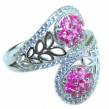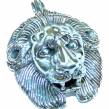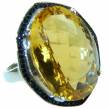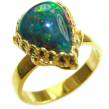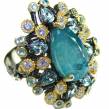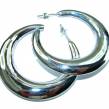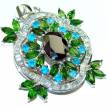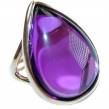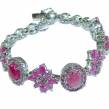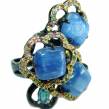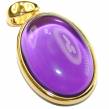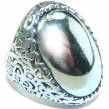The Golden Era of British jewelry in Silverrush Style!
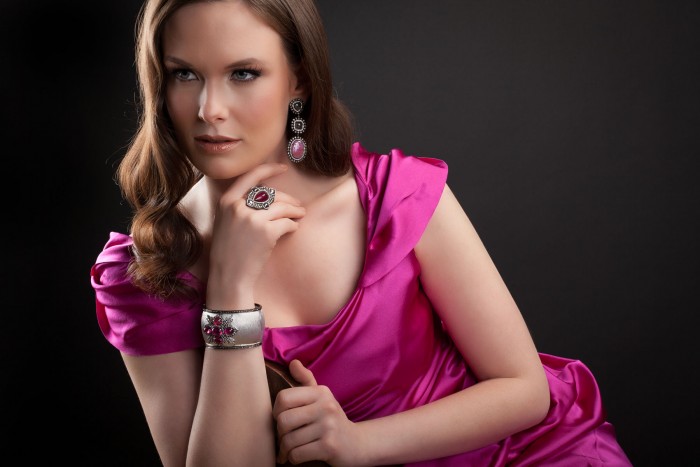
How do we recognize unique jewelry? Experts in the subject indicate a certain paradox here and state that wonderful jewelry or great patterns characterized by a huge fascination for the duration of fashion for time of the style and design, and the wave of criticism that flows onto this type of jewelry soon after the fashion season for it passes. It was similar with Victorian jewelry, which throughout the life of Queen Victoria, from whose name the jewelry of that time period is adopted, was adored, and shortly after her death – became the object of biting comments and criticisms.
What is the phenomenon of jewelry, which is still so popular after over 100 years?
It turns out that Victorian style jewelry still delights us today. Its timeless beauty is affected both by the diversity of currents, which it combines in itself a rich ornamentation which characterizes it. Its secret also lies in elegance and romance.
Exceptional rosettes, rings, pendants, bracelets, earrings in elaborate styles, full of sophisticated glamor – like found in jewelry box of a great-grandmother. They combine the magic and beauty of diamonds, sapphires, and emeralds, rubies or pearls. They captivate timeless class and charm. “The Victorian Collection” from Silverrushstyle, is jewelry designed in order for its beauty to become a part of family history.
This is why we decided to reach for fascinating patterns, which formerly decorated our great-grandmothers, adding beauty, style and glamor to their refined beauty. Our new collection connects with this beautiful era with its own style.
The Victorian Collection of our company, Silverrush style, is a mix of the main style trends of Queen Victoria, as well as our own hint of Orientalism and mysticism.
The collection created by us, is a combination of a magical style of classic English- Victorian style with oriental splendor of the Middle East.
Our pendants, rings or necklaces often reflect the mysticism of the Ottoman Empire and at the same time fit entirely into the classic appearance of Queen Victoria’s jewelry. At this point, it is worth to add that our main inspiration remains between all three periods of the Queen’s reign and all three periods of trends during this long time period, but from the beginning.
The age of Victoria was disciplined by the progressives of the early twentieth century, who accused the Queen of excessive puritanism, hypocrisy and promoting the image of a “machine-woman”, that is unavailable, haughty, un-real and which effectively suppresses all forms of humanity. The queen’s reign was later described as “Horror Victorianorum”. The only characteristic of the Victorian era, which was not crushed by the criticism turned out to be … jewelry!
The term “Victorian era” refers to an interval between the years of 1937 and 1901, when proud of Victoria sat on the throne of the Kingdom of Great Britain. At the beginning of the reign of the queen, “Victorian jewelry” was defined only as products manufactured on the islands. Later, when the Kingdom broadened its influence and strengthened position as a world empire, “Victorian” began to also recognize “royal” tones, very sophisticated and ornate jewels in continental Europe and America.
In view of the fact that Victoria – in terms of length of celebrated governments – broke all records, jewelry produced during her reign is divided into three stylistic periods – the romantic phase (which lasted until the 60s in the nineteenth century), the middle Victorian period (until 1885, until the death of her beloved husband, Albert) and the time of decline, where the cut-off date is the day of death of Victoria.
Romanticism according to the British
During the first period, the British fashion jewelry seized styles with details and patterns inspired by nature. Romantic creators – regardless of the matter in which they progressed – often derived from the ancient heritage and treasures of discovered anew Middle Ages. Hence, the gems produced at this time can be traced back to the gold jewelry of ancient Greek motifs resembling bunches of grapes, flower petals, volatile sinister birds and snakes. During the wave of expansion of the Empire, the British jewelers were also inspired by Celtic motifs (an increase of interest in this convention was dictated by the purchase of a Scottish castle of Balmoral), Oriental and Far East. Jewelers were able to unite various forms and concentrated on ornate eclecticism, which reflected their romantic fascination focusing mainly on everything unknown, mysterious, and the appealing unexplored.
Earrings, brooches or pendants were decorated with beautiful, often Celtic ornaments and precious or semi-precious stones – agates, pearls and corals. The newly liked trend was also richly stained glass, antique cameos and phenomenal, painted on porcelain miniatures used for the production of decorative pendants.
Strictly romantic soul appeared strongest in women’s jewelry – sentimental, concealing wistful mystery. Pendants or rings with openings in the middle where favorite perfume droplets could be stored were extremely popular- even used by the one chosen by heart. Gentlemen, moreover, also succumbed to the fashion of sentimental romanticism and willingly wore pendants which in their interior, hid locks of women’s hair.
Medallions made of molded shapes of letters from rubies, emeralds, garnets, amethysts and diamonds have also become very fashionable. These jewels could be hung in any order and lay out specific words.
Hard times without Albert
At the time of the death of Prince Albert, the Queen fell into eternal mourning. The sadness of Victoria – which was one of the few queens who actually loved her husband – translated into jewelry trends and ushered the second period of the Victorian era, called the Grand Period.
After the departure of the prince, after 1861, sentimentality was abandoned in favor of hard, adorned mourning jewelry, created both with stones (mainly black onyx) and with most expensive, dead people’s hair.
Rings worn mainly referred to mourning ribbons and filigree ornaments made of intricately woven and laid out on agate and mother of pearl, overlapped with clear glass switches with mold its shape. Hair was also heavily braided and used as bracelets or chains supporting the memorial medallions.
In the second, covered with mourning for Prince Alberta, stage of the Victorian period mostly dark, heavy ornaments made of garnet, onyx and fossilized carbon were worn. Continuously popular, were miniatures painted on enamel, which – rather than sentimental sights – depicted images of the dead. Brooches or medallions decorated with ornaments were inspired by the mourning lily, and when Queen Victoria was named Empress of India – also oriental, Hindu motifs.
Jewelry was also inspired by the art of ancient Egypt and Rome. The trend referred to as Revival introduced the fashion of a mosaic, which decorated earrings and lockets, earrings shaped like large leaves, decors imitating grapes (created with colored purple glass), busts of the pharaohs and scarabs.
Diamond aesthetics
Although the queen did not make peace with the death of Albert until the end of her life, her subjects recovered after years of mourning and were newly interested in a more optimistic ornamentation. Individuals again opted for eclecticism and jewelry ornaments produced both with precious diamonds mined in South African mines, as well as with turtle shells and ivory. Gold, which starting 1840 was galvanized was widely used as well. With the discovery of new sources of this precious ore – gold has become mainstream, and virtually every subject queen of the queen could afford the purchase of trinkets made from it (filled with copper and studded with South African diamonds).
After the queen’s death, the period of prosperity ended. The time for a revolution of manners and great political changes has come. However, Victoria’s memorabilia – including jewelry ornaments decorated with her likeness and produced for the occasion of important anniversaries for the Empire – enjoyed enormous popularity for a long time. They were regarded as the most desirable jewels inspired by the romantic period, when the Queen was young and madly in love with Albert. It is this, sentimental, heavily ornamented style that is the most popular today. Because jewelry is a true Victorian style, it is the magic of a bygone era and the hint of imperishable beauty. Brooches, earrings, cameos or closed pendants are making a comeback. Just as the reign of the queen who is increasingly recognized not only as the mother a successful Empire, but also as the greatest ruler in the history of the world.
Silverrushstyle, inspired by this particular epoch in the history of jewelry, created collections, which with its designs refer to the period of the reign of Queen Victoria, but at the same time tries to give her a new original character and we hope that our stylish Victorian jewelry will meet with a similar interest today, as in the classic in 19-th century.

